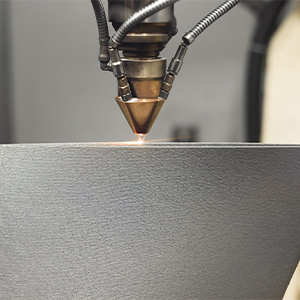What Is UKCA Marking?
Post By: Tom Rowse On: 22-10-2021 - Manufacturing
UKCA has been introduced as a consequence of Britain's disengagement from the European Economic Area (EEA), commonly referred to as Brexit. The initials CE stand for the French Conformité Européenne, or "European Conformity", and indicate that any product carrying this mark conforms with all applicable EU Directives. The former requirements for CE marking of manufactured products have now been changed to a similar, but UK-only product certification system known as UKCA.
Any product sold in the UK which formerly carried a CE mark will now carry a UKCA mark. This guarantees to the consumer that all relevant health and safety regulations, environmental legislation and applicable standards for the product have been met by the manufacturer and that it's safe and legal to use. It covers much the same range of products that were previously marked with the CE mark, such as electrical items, radio equipment, PPE and toys, plus the new addition to the list of aerosol products.
What Is UKCA Marking?
The new term "UKCA" stands for "UK Conformity Assessed" and is the new product certification system that must now be used for manufactured products sold in England, Wales and Scotland. Because of the ongoing economic negotiations surrounding the Northern Ireland Protocol, the UKCA mark may not be used on its own for marking of products for sale there. The new mark may be used as well as the existing marking, but at the moment products for Northern Ireland must continue to carry the CE mark.
Any products designated for sale in markets outside Great Britain must also continue to carry this mark, if they fall within the scope of the EU Directives. Not all products follow the same directives (see below for exceptions), but in general the rules for UKCA marking are much the same as those for the existing CE mark. No doubt modifications will evolve, but the main consideration at present is to ensure a smooth transition to the type and style of marking.
All UKCA technical documentation must be carefully recorded and kept for at least 10 years after product launch, to be produced for inspection where necessary. Documents should show how the product is manufactured and demonstrate its conformity with the relevant legislation. A UK Declaration of Conformity will also need to be drawn up, which will largely be the same as the declaration previously required by the EU. See below for more details.
What Is Happening To CE Marking?
CE marking will continue to be acceptable in Great Britain until the end of 2022, so that manufacturers have sufficient time to adapt to the new system. You must use the UKCA marking from 1st January 2023, but where the rules for the UK and EU stay the same, the CE marking will still be valid until then. If the EU decides to alter its rules for CE marking, and you label your products with the CE mark based on those new rules, this will disqualify you from selling them in the UK. This provision applies even before the validity of CE marking expires on 31st December 2022.
Products that carry a CE mark haven't necessarily been manufactured in the EEA. The mark confirms only that they've been assessed by an authorised body for conformity with EU directives. If any manufactured product has been passed by such a body it means that it can then legally be put on the EU market. The CE mark shows that the product is in compliance with all necessary legal requirements, such as health and safety directives. The UKCA mark will carry similar meaning in a more limited economic arena.
When Does The UKCA Mark Come Into Force?
The new regulations came into effect on Brexit day, the last day of 2020. This means in reality that the UKCA regulations were enforceable from 1st January 2021, in accordance with the original Statutory Instruments (SI) drawn up for the EU Exit. For most products, the applicable regulations are specified in SI 2019:696, with relevant amendments.
What Products Does The UKCA Mark Apply To?
According to the above SI, UKCA marking will be required for products that currently need to be assessed for conformity by a notified body, or that can be self-declared. This follows the same procedure and applies to the same products as CE marking, but may well begin to diverge over time. Products and elements that are covered by the legislation for UKCA marking include the following:
- Aerosols
- ATEX
- Ecodesign
- Electromagnetic compatibility
- Equipment for use outdoors
- Gas appliances
- Lifts
- Low voltage electrical equipment
- Machinery
- Measuring instruments
- Non-automatic weighing instruments
- Personal protective equipment
- Pressure equipment
- Pyrotechnics
- Radio equipment
- Recreational craft and personal watercraft
- Restriction of hazardous substances
- Simple pressure vessels
- Toy safety
Separate guidance is given for medical devices, civil explosives, construction products and rail interoperability.
Self-Declaration Of Conformity
There are certain legislative areas where self-declaration of conformity is permitted for the UKCA mark. These include:
- All products governed by the Electrical Equipment (Safety) Regulations 2016.
- All products governed by the Electromagnetic Compatibility Regulations 2016.
- All products governed by the Restriction of the Use of Certain Hazardous.
- Substances in Electrical and Electronic Equipment Regulations 2012.
- All products governed by the Radio Equipment Regulations 2017, except in certain circumstances.[1]
- Category I pressure equipment, as designated by the Pressure Equipment (Safety) Regulations 2016.
- Some Class I devices. as designated by the Medical Devices Regulations 2002.
- Products governed by the Toy (Safety) Regulations 2011, where designated standards cover all essential requirements and these standards have been applied by the manufacturer.
- Certain classifications of recreational watercraft, as specified by the Recreational Craft Regulations 2017.
- Products falling within the scope of System 4, as specified in the Construction Products Regulations 2013.[2]
- Any machine not included in Schedule 2, Part 4 of the Supply of Machinery (Safety) Regulations 2008. In addition, any machine found within Schedule 2, Part 4 of those Regulations, where they comply with all relevant essential requirements of the applicable designated standards.
- Equipment specified under Group II, Category 3 of the Equipment and Protective Systems Intended for Use in Potentially Explosive Atmospheres Regulations 2016.
- Category I PPE, as specified in the Personal Protective Equipment Regulations 2018.[3]
The conditions for self-declared conformity for products with UKCA marking remain the same as those in place for CE marking. This means that if you previously self-declared product conformity to get the CE marking, you'll be able to carry on doing so for UKCA marking.
How To Use The UKCA Mark
The government has drawn up guidelines to tell you how the new mark should be designed and displayed.
Format
This is the design for the UKCA mark:

However, there are various stipulations regarding the use of the mark, which include:
- It must be at least 5mm high – unless the relevant legislation for your product specifies a different minimum dimension.
- Subject to the above stipulation, you may enlarge or reduce the size of your mark, provided the individual letters that make up the UKCA mark are in proportion to the above representation.
- The UKCA marking must be clearly legible and easily visible.
- You can vary the form of the mark (e.g. using outline lettering rather than a solid fill), subject to the above provisions of visibility, legibility and proportion.
Placement
The UKCA marking should be applied directly onto the product, or to its packaging. If you can't situate it on the product where it's clearly visible and legible, then you'll have to attach it to the product packaging or accompanying literature, such as manuals or technical files. Where you place the UKCA mark is usually governed by specific regulations applicable to each product.
What Are The Manufacturer’s Responsibilities?
Use of the new UKCA mark by manufacturers carries several responsibilities in relation to their products.
Product Marking
The style, size and usage of the UKCA mark is specified by the government as follows:
- You must only place the UKCA marking on a product when the legislation specifically requires you to do so.
- Only the manufacturer (or an authorised representative of the manufacturer if the relevant legislation permits) may place UKCA markings on a product.
- The UKCA mark must only be used to demonstrate a product's conformity with the applicable UK legislation.
- Placing the UKCA mark on a product signifies that you accept and acknowledge full responsibility for its conformity with the relevant legislation's requirements.
- No other marking or sign may be placed on the product that might lead third parties to misconstrue the UKCA marking's form or meaning.
- No other markings may be attached to the product which might affect the legibility, meaning or visibility of the UKCA mark.
- You may affix additional markings to a product, provided they fulfil the above requirements and perform a function that differs from the UKCA marking.
Declaration of Conformity
Manufacturers must provide a UK Declaration of Conformity for most products that now fall under the UKCA marking legislation. This should be separate from any EU Declaration of Conformity that you might require for other products.
This document requires manufacturers, or (if the relevant legislation permits) your authorised representative to supply certain information for inspection if requested by market surveillance authorities. Most of this information will be the same as that which you supplied for the previous EU Declaration of Conformity. There may be variations according to the applicable legislation for each product, but it should typically include:
- The manufacturer's name and full business address (or, where permitted, that of their authorised representative.)
- Any necessary information about the product itself, such as its model or type identification and serial number.
- Where relevant, any information you can provide about the authorised body which conducted the conformity assessment, if applicable.
- A declaration that the product conforms with all relevant statutory requirements that may apply to that specific product. This declaration must cite relevant UK legislation, which will replace the previously cited EU legislation. Similarly, you must now cite UK designated standards in your declaration rather than EU standards.
- A statement that you as manufacturer (or your authorised representative, if applicable) take full responsibility for the compliance of the product with all necessary legislation.
- Your name and signature.
- The date of issue of the declaration.
- Any applicable supplementary information.
Record Keeping
As well as the official Declaration, you must keep records of your product's conformity with regulatory requirements. You or (if permitted in the relevant legislation) your authorised representative must provide this documentation and keep it accessible for up to 10 years after placing the product on the market. Market surveillance or enforcement authorities are empowered to request these records from you at any time, so that they can confirm that your products are in compliance.
The information you provide in these records will vary in accordance with the specific legislation for each product. In general terms, records need to demonstrate:
- How the product was technically designed and manufactured.
- How the product proves its conformity with the relevant requirements.
- The manufacturer's address and that of any storage facilities for the product.
This information should be collated as a technical file which you can supply to a market surveillance authority if requested.
Summary
The UKCA marking system is a revision of the system we used when we were part of the EEA, and will now follow UK legislation rather than that issued by the EU. The products which require the conformity assessment are pretty much the same as before, with the inclusion of aerosol products which were formerly separate. Certain categories of goods are still dealt with separately, such as medical devices, construction machinery and explosives, and full details of all provisions can be found on the government guidance website.
Manufacturers will have the same responsibilities for assessing and declaring their products' conformity, and consumers will be able to place the same confidence in the safety of manufactured goods as they did before. The main difference in the new legislation is that it doesn't currently cover Northern Ireland, and there will be some cross-over between CE marking and UKCA marking until this situation is resolved.
[1] Under Regulation 6 (2), where designated standards either do not exist or the manufacturer has not applied them.
[2] Derived from amendments to Regulation (EU) 305/2011 and brought into UK law.
[3] Derived from amendments to Regulation (EU) 2016/425 and brought into UK law.
Get More From Rowse Straight To Your Inbox




